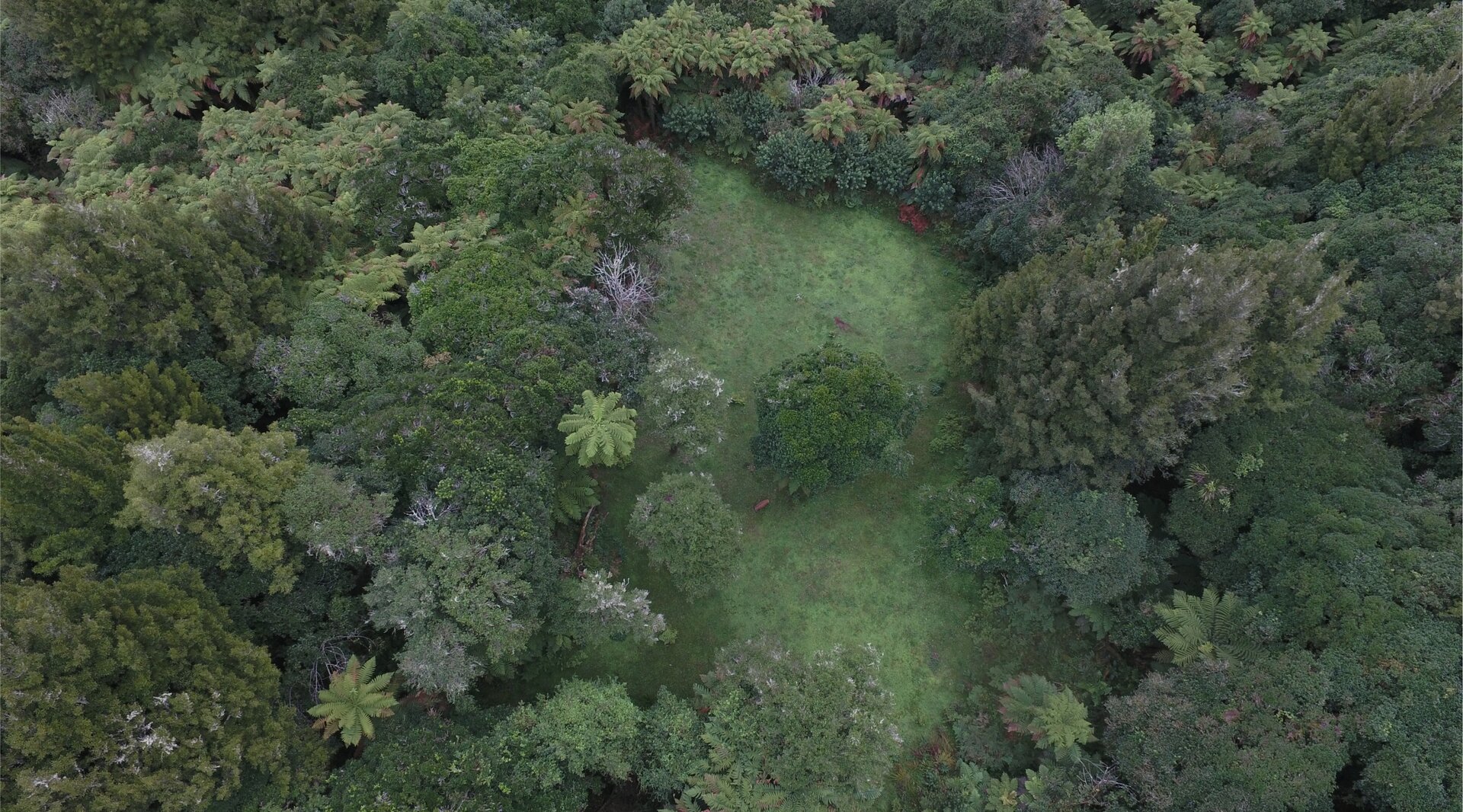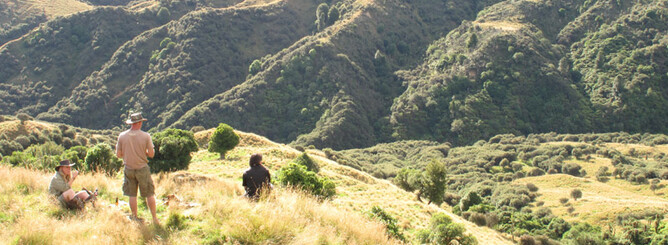The creation of Wildside Getaway all started with a walk in the bush with our six month old son in a backpack, in the steep hill country surrounding the Central Plateau. The property had stunning views towards both the Whanganui River Valley on the one side and the volcanic peaks of Mounts Ruapehu and Ngaruhoe on the other.
Being a keen outdoors family with a love of remote country places and hunting, it didn’t take much convincing to purchase the 140 hectare bush property that is now Wildside.
The bush section had been considered commercially unviable land. The large trees had been logged in the early to mid 1900’s, particularly for rimu, but the bush had not been cleared, a practice undertaken as part of the attempted settlement of land by returned serviceman in the nearby Whanganui Valley at the Bridge to Nowhere.
Today Wildside is largely covered with tawa and beech forest, with a few remaining large rimu specimens.
In terms of development, the property had limited access, no dwelling or buildings of any sort and no access to any services including power and telephone. The perfect place for an eco-conscious couple with an engineering and environmental science background to develop a sustainable property.
Probably one of the biggest challenges was living and working in Auckland while using all our spare time to build a self-sufficient house, largely on our own.
The first task was to clear a piece of land and create a building platform, with limited access to earth moving machinery. The chainsaw became our best friend and ally followed by a small 1.5 ton digger which moved thousands of cubic metres of earth in order to create a level building site.
Accommodation started with a tent, progressing to sleeping over in the backpackers during the winter months. This was with the exception of the odd occasion when we had to sleep in the 4WD as we got stuck in the mud on the way in thanks to the wild pigs having “ploughed” the access track days before.
During the day, shelter from the elements was provided by a tarpaulin. It was luxury to cook on a stainless steel bench placed on a pile of logs. It gave us a small glimpse of the cold and hardship that the early settlers in the valley endured.
At least for us it was only on weekends and only for a period of a year or so, before we built a 4m x4m plywood hut with solar lighting and an outside solar battery powered shower. This was the start of an off-the-grid lifestyle. The hut was unlined but with a gas heater in the cold winter months it was absolute luxury.
This hut was our abode on most weekends for the next three years while we built the house. The build certainly had its challenges. It started with the pouring of the concrete rib-raft floor slab. The combination of an 800m earth track access-way and a concrete supervisor by the name of Bimbo turned out to be disastrous.
After repeated assurances that the concrete mixers would have no trouble accessing the building site, they never made it up the first hill and we are now the only cockys in the area with a partly concrete driveway.
Erecting the 12m x 4m walls of the steel-frame building, which had been built on the ground, was also memorable. This was a job for a minimum of four people, and we had three. The lack of that extra set of hands meant we had to lift the walls inch by inch, hour after painstaking hour.
As the day wore on it became apparent that this was a losing battle and that we could not possibly complete the task in the day and stabilise the structure by raising the opposite wall also. This would mean lowering the wall all the way to the ground again and starting over when we had more human resources. We felt utterly exhausted and defeated and as we were about to give up, two pig hunters we knew appeared around the corner.
The day was saved. Both walls were stood up and stabilised in under half an hour.
Getting power to the house was a no-brainer. We had the perfect opportunity to consider off-the-grid options, with the closest power line a kilometre away. After much research we installed two 2kW wind turbines on old steel light poles, ten solar panels, a battery bank and an inverter at a high point some 100m from the house.
A beer, chilled by the sun and wind, never tasted so good. Wildside had joined the 21st century, on its own terms.
Because of our desire to live more sustainably while still enjoying the comforts of a modern home, we chose features such as solar, wetback and instant gas hot water heating, double glazing, a high level of insulation, passive solar heating, low VOC paints and furnishings.
Some furniture has been handcrafted, with timber for the rimu bunk beds obtained from the flooring of the renovated police station in Taumarunui. Rainwater is collected from the roof, and waste-water is treated by a centralised worm composting system.
Soils on the property are of naturally low fertility. However, with organic and biodynamic methods we have successfully developed pasture areas for red and fallow deer, and planted a small orchard of heritage fruit trees.
After some eight years of passionate endeavour, Wildside Getaway is now the location for a self-sufficient home with all the mod-cons, as well as a home for deer, a few Wiltshire sheep and some chickens. It is a work in progress with many more dreams waiting to be realised.



